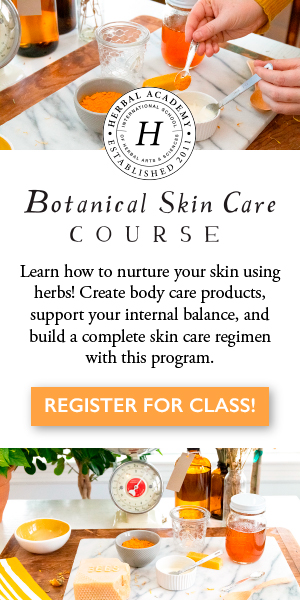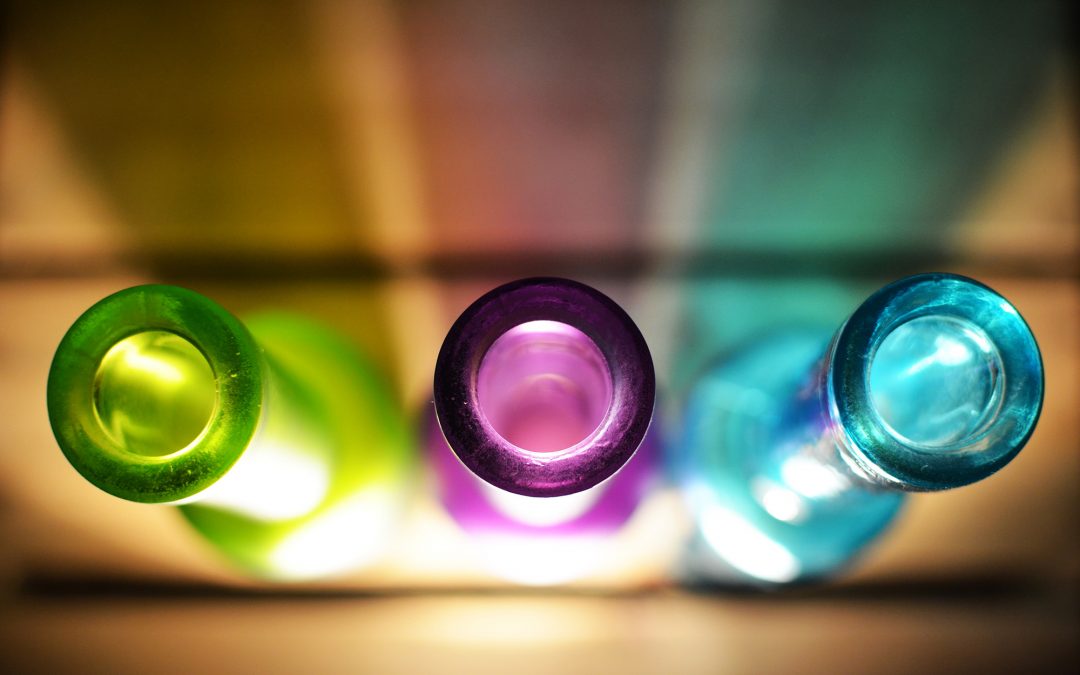
by Leslie Moldenauer | | Essential Oils
The word hydrosol is a chemistry term meaning “water solution”. It is derived from the Latin hydro, meaning, “water”, and sol, for “solution”[1]. My top uses for hydrosols-essential oils secret prize!
When steam distilling plants for their essential oil, there are two ‘containers’, one vessel collects the essential oil, and what is left is the fragrant water.
Every distillation process will contain hydrosol as the end result. Some discard it, others bottle it, and there are specific distillers that are dedicated artisans of hydrosols.
So what makes hydrosols different and gentler than essential oils?
According to Suzanne Catty, author of Hydrosols, The Next Aromatherapy, “Every liter of hydrosol contains between 0.05 and .2 milliliter of dissolved essential oil ”[2]. With hydrosols, the dissolved essential oil is micronized, in other words, the droplets are incredibly teeny tiny and thoroughly emulsified, much different than placing a drop of an essential oil in a glass of water. Hydrosols are incredibly safe for everyone, even to ingest…gasp….and are definitely a favorite first ‘aromatic’ for babies.
Some hydrosols smell very similar to the plant from which they were derived, while others do not, but they all contain therapeutic properties.
If you want to try aromatics, and you have a baby or a toddler, give hydrosols a try first. Here are a few of my basic recommendations:
Roman chamomile (Chamaemelum nobile) hydrosol
Roman chamomile hydrosol can be added to a bath and used for any skin discomfort such as diaper rash, heat rash, or cradle cap. This hydrosol can also be mixed with water and applied via a warmed or cooled washcloth; whichever is preferred.
German chamomile (Matricaria chamomilla) hydrosol
German chamomile hydrosol is preferred for teething pain.
Hydrosols are much safer and are still effective. You can apply German chamomile hydrosol neat (without a carrier) with a clean finger to the gum area for quick relief.
I began making hydrosol popsicles for toddlers with rave reviews. A mixture of German chamomile hydrosol (very little is needed), elderberry syrup, a small amount of raw honey to taste and water make tasty popsicles for toddlers. They instinctively know to bite down right on the spot that hurts, and it is smooth sailing. I love these silicone holders.
*Honey is not for babies under one year of age
Elderberry adds nutrition to the popsicle. Follow volume instructions based on the box of syrup. There are a lot of fun options here.
Lavender (Lavandula angustifolia)hydrosol
Lavender hydrosol is one of the more popular hydrosols on the market. Just like the essential oil.
Add Lavender hydrosol to a spray bottle and spray it on any reddened skin. It is an exceptional skin soother.
Add a capful of hydrosol to a bubble bath or to a small amount of lotion for a reassuring and relaxing bedtime massage. Lavender hydrosol is a great enhancement to any night-time routine.
*Do not add a large amount of hydrosol into an existing lotion, you may lose the quality of the emulsion. You would also need to add a preservative, as hydrosols are water based.
Peppermint (Mentha piperita)hydrosol (Not for use with small babies)
Peppermint hydrosol, in a spray bottle for cooling down on a hot summer day or if fever is present, is recommended over any other essential oil, hands down. Neither the hydrosol nor the essential oil counterpart will significantly reduce a fever but will definitely provide cooling comfort. You can also soak a washcloth with a capful of the hydrosol and apply to the forehead or back of the neck.
Here are a few more of my favorite uses…..
I have made up a solution 1/1/1 of calendula, tea tree, and Roman chamomile (can use German too) hydrosols as a toner for acne. A bottle sits on many countertops in my local area of teens that swear by it, and no longer use their soaps.
I have all but sworn off soap too! Why? Soap strips away the natural protective acid mantle in the skin creating irritation, it is also very drying, and for some teens even promotes acne! I typically do not use any particular mixture, although I am very fond of rose. Swoon….
I have made hydrosols a staple in my hair care routine. My hair is extremely thick, and extremely course, reminiscent of a horse’s mane, and getting to my scalp is a bit of a challenge. Without hydrosols, I had a really tough time rinsing out all of the conditioners; near impossible, in fact. Enter hydrosols. My favorite here is rosemary hands down, I love Chris Burder’s from Australia, but have substituted lavandin in a pinch. Right before stepping out of the shower I slowly pour cupful’s onto my scalp. My mix is usually 4 cups of warm water to ¼ cup hydrosol. Keep in mind that my hair is really thick and down to my waistband. Measure accordingly for your volume of hair. The result? A clean moisturized scalp, and much shinier manageable hair. I took this photo after a rinse and posted it on my Instagram page:
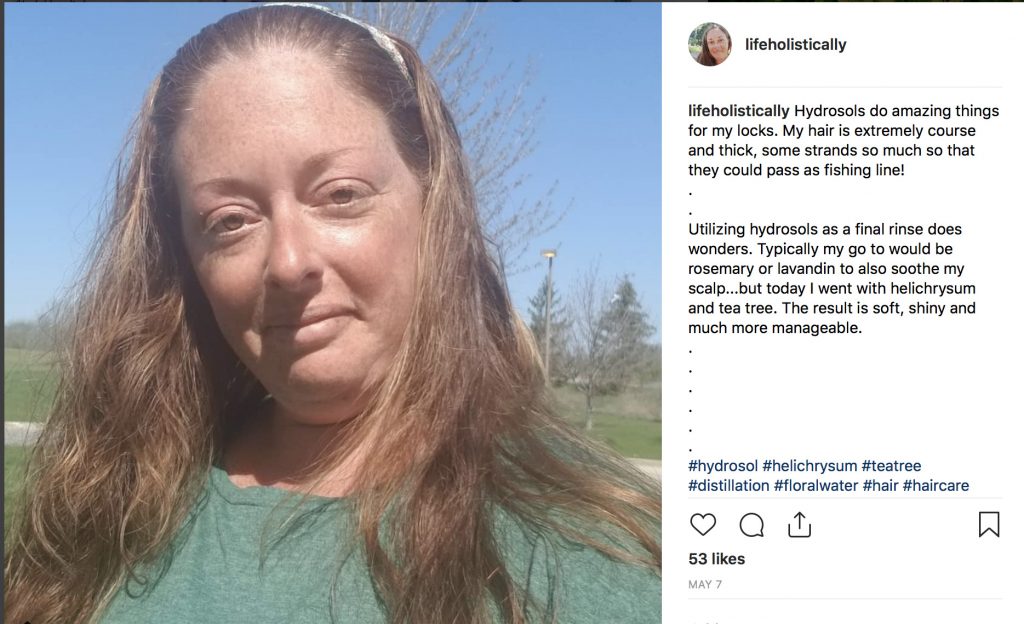
Start playing around with hydrosols, you will find many more uses for your whole family!
References
[1] [2] Catty, S. (2001) Hydrosols, The Next Aromatherapy. (p 9) Rochester, VT: Healing Arts Press
Like so many practices in life, I encourage you to become educated on the proper use of essential oils. When using them, please do so cautiously, understanding that there is often misinformation on the internet. You can be assured that I support only educated and proven resources. While essential oils should not be feared they should be respected and used properly to ensure the safety of the individuals using them.
Please note that I am not a medical practitioner. The content of this website is provided for general informational purposes only and is not intended as, nor should it be considered a substitute for, professional medical advice. Do not use the information on this website for diagnosing or treating any medical or health condition. If you have or suspect you have a medical problem, promptly contact your professional healthcare provider. By using this website, you assume full responsibility and liability for your own actions.
BEFORE YOU GO! Remember to sign up for my FREE Facebook group! Hang out with me and THOUSANDS of other Essential Oil lovers looking to learn, click on to join Real Essential Oil Education Group!
Check out my FREE offer below!
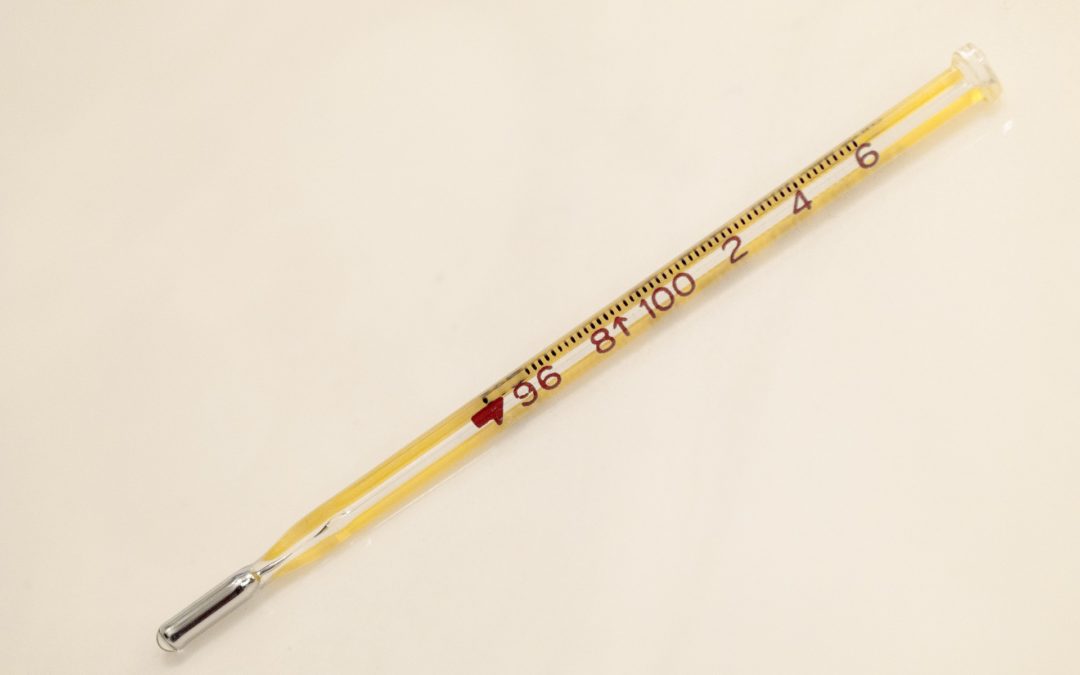
by Leslie Moldenauer | | Essential Oils, Herbs
Moms, Let’s Talk About Holistic Treatment For Fevers. As a mom of two young boys, I can attest to the unease that can come with having little ones run warm, their heart looking like it will beat out of their chest, checking on them a dozen or so times during the night, and trying every trick up our sleeve to make them more comfortable. As a pretty “crunchy mom” or “green mom”, I was never an advocate of Tylenol at all, and would only use Motrin as a last resort if someone was so completely miserable despite my best efforts to make them more comfortable. This was usually due to accompanying pain.
Drawing down a fever is not something that is recommended, as a fever is a sign that our immune system is working as it should be to help us get well. Rather than make my case for why you would or would not want to lower a fever, I want to cover the various ways in which we can work to make our kids a bit more comfortable while supporting their immune system to fight whatever germs are trying to take hold.
*It is important to note that if your child becomes extremely lethargic or they are having respiratory difficulty, you need to seek medical attention. Speak to your doctor about a safe upper limit for a fever.
There are various things that we can do, holistically speaking to “cool” and “comfort” a child who presents with a fever.
*I am very educated in many areas including aromatic medicine, and pretty open-minded, but one recommendation you will never get from me is to use essential oils internally on a child. So oregano essential oil internally for example? NOT happening.
The first thing I want to bring to your attention is the use of herbs. They are by far more gentle and much more efficient at managing fevers. Surprised? Let’s look at some of the ways they can be used.
Diaphoretic Herbs
Diaphoretic herbs actually induce perspiration, helping the body to sweat. Why is this helpful? Think of your body like the thermostat in your home. They have very similar mechanism’s. Inducing perspiration helps to cool down the bodies core temperature. And shivering when cold is the bodies way of getting warm. Diaphoretic herbs work like this: they enter the circulation and are then thrown off by the sweat glands.
“Diaphoretic herbs stimulate the local nerve-fibers to increase glandular action. These herbs influence the peripheral sensory nerves, whose main job is to relax and dilate the superficial capillaries and vessels. They primarily influence surface circulation, and perspiration is the result of this increased blood flow” [1].
So what does all of this mean? Diaphoretic herbs can be used safely to sweat it out, help lower the fever while not interrupting the immune process like acetaminophen or NSAIDS will. Let’s explore this a little but further.
Diaphoretic Herbs-Relaxing and Stimulating
Relaxing Diaphoretics
Relaxing diaphoretics are used when a fever is present with no actual visible sweating. Relaxing diaphoretic herbs may increase peripheral circulation and help to open the pores (inducing/enabling sweating) [2]. Some relaxing diaphoretic herbs also help relieve the aches and pains associated with fevers. Here are a few relaxing diaphoretics that are safe for kids:
- Catnip (Nepeta cataria)
- Chamomile (Matricaria recutita)
- Lemon Balm (Melissa officinalis)
- Yarrow (Achillea millefolium)
At home, I blend equal parts of Catnip (Nepeta cataria), Chamomile (Matricaria recutita), and Lemon Balm (Melissa officinalis) and store tightly in a mason jar. When my boys (or I) come down with a fever, I begin making a tea (a weak tea for the boys) of 1tsp of these herbs and have them sip throughout the day.
When these herbs are sipped hot, they will help to raise the body’s temperature and produce perspiration by opening the pores of the skin. Add honey to taste (Honey is not for a child under the age of one).
Stimulating Diaphoretics
Stimulating diaphoretics enter the blood and as they are eliminated through the sudoriferous glands; any of the glands in the skin that secrete perspiration [3]. Stimulating diaphoretics are used when a person has a fever but are likely having “chills”. I think we have all been there at one point. Hot but cold. These warming herbs support the increase in our internal temperature. This may sound backwards, but remember when I spoke to the thermostat of our body. These herbs are working to increase sweating to lower the fever without interrupting our body’s ability to fight for homeostasis like allopathic medications do. Here are a few stimulating diaphoretic herbs that are safe for kids:
- Echinacea (Echinacea purpurea)
- Elderflower (Sambucus nigra)
- Ginger (Zingiber officinale)
- Spearmint (Mentha spicata)
Spearmint (Mentha spicata) is a member of the Lamiaceae family. Spearmint is a mild but effective diaphoretic making it suitable for children in a tea. You can utilize an decoction here as well, which is a strong tea and soak a washcloth to apply to back of neck, abdomen, forehead, etc. Both Echinacea and Elderflower will do double duty here. They are stimulating diaphoretics and immune supporters/boosters. A tea of these three is also a great remedy, although Echinacea and Elderflower will not be “as” effective in your cool cloth.
Essential Oils and Hydrosols
As an aromatherapist, I still prefer utilizing hydrosols for babies and small toddlers. If using a hydrosol will work, why use the much more costly and strong essential oil?
*Please, always keep the impact on the environment in mind when using your oils.
Spearmint is my first choice for children. You can spray the hydrosol or use the essential oil diluted in a carrier oil and rubbed on the back of the neck, follow Plant Therapy’s dilution recommendations found here. Inhalation is another option via a diffuser but will not be as effective to comfort in this instance (I recommend calming essential oils in the diffuser such as Lavender (Lavandula angustifolia), Roman chamomile (Chamaemelum nobile), or Sweet orange (Citrus sinensis) to make your child more comfortable. Alternatively, you could fill a bowl with luke warm water (never ice cold) and add a drop or two of spearmint essential oil along with 1 tbsp of carrier oil such as jojoba or almond and soak their feet in the water OR wring out a small towel and place on the back of their neck or abdomen. (Keep away from eyes and mucous membranes.)
I would like to briefly address Peppermint (Mentha piperita) essential oil. The constituent menthol in peppermint triggers the cold-sensitive TRPM8 receptors in the skin and is responsible for the well-known cooling sensation [4]. Peppermint essential oil, as well as Peppermint hydrosol, is in fact very cooling. In fact, the cooling effect of the essential oil is pretty profound; it is not one I recommend for use in the bath for this reason. Is this oil or any essential oil effective at truly reducing a fever? Not likely, but it will definitely provide cooling comfort. Unlike Spearmint, Peppermint essential oil and hydrosol should be avoided for babies and small children. Go with the spearmint!
Remember, a fever is the body’s way of saying that the immune system is doing its job in getting you better. As you begin to sweat, you kick the immune system into high gear and help it do its job. From one parent to another….even though it is hard to see your child uncomfortable, try not to “fear a fever.”
Like these ideas? Stay tuned for others. Please, let me know if you have any questions, I am happy to help.
***As I am not aware of your child’s medical history, please research to make sure that they do not have any medical condition or are taking any medication that may interfere with any of these herbs.
“Mom’s Essential Oil Evolution”, strengthening families, empowering mom’s.
Reference
(1) https://www.elitefts.com/education/motivation/the-elite-herbalist-diaphoretic-herbs/
(2) (3) https://www.bulkherbstore.com/blog/herbs-for-fever/
(4) McKemy, D. TRPM8: The cold and menthol receptor. Chapter 13. Retrieved from https://www.ncbi.nlm.nih.gov/books/NBK5238/
Please note that I am not a medical practitioner. The content of this website is provided for general informational purposes only and is not intended as, nor should it be considered a substitute for, professional medical advice. Do not use the information on this website for diagnosing or treating any medical or health condition. If you have or suspect you have a medical problem, promptly contact your professional healthcare provider. By using this website, you assume full responsibility and liability for your own actions.
by Leslie Moldenauer | | Essential Oils
Parenting is hard!
I am sure you have heard it and said it many times over, “Parenting is the best job on the planet, but also the hardest”. My boys are now 9 and 11, I am a newly single parent….and I can say with utmost confidence to all the new parents out there, it does not get easier. I do not say this to hear a collective “sigh”, but let’s face it, having kids is not easy! There is no manual! Hey, if there is a manual, can you all share it with me please?
So, if a trusted friend offers you help…you take it, willingly. When I had friends step up and say, “Just let me know when you need help, I am here”, my first instinct was to say “I got this”…..but I wound up graciously accepting their help, many times over, and I am very grateful for it.

There have been many conversations around a table talking about the latest achievements and the biggest challenges. Learning what works for other parents is very helpful to me. The same goes for many other areas of my life, but that “testimonial if you will” usually stops at medical advice. There is usually a limit to solicited advice for all of us, right?
Now, if I decided to head to Google to ask for advice about my kid’s behavior, I would be sure to find a plethora of information, many of it conflicting, about what it is I could do to get over my most recent challenge with my boys. Blogs, books, webinars, pieces of training, you name it….I would be reading for days, not really being sure if any of it would actually work. Some advice from parents, others from educated professionals, and everywhere in between.
The same goes for aromatherapy, if you Google a question you will find a plethora of good information, as well as a plethora of not so good information. The advice will come from parents, salesmen and woman, educated aromatherapists, and everywhere in between.
There are issues with both of these scenarios, but the one with the most risk is the latter. I can follow a few pieces of well-meaning bad advice about parenting, and the worst that will happen is it will not work, or I suppose it could even get worse…but not at any real risk to health or safety.
We cannot say the same about aromatherapy.
Even so, well-meaning individuals give bad advice every day. This is not intentional nor malicious…but it happens none-the-less. I know there are many parents out there that are hesitating to start using essential oil in the home because they just do not feel confident enough. Am I right? I also know quite a few who have contacted me asking if something they have been doing is ok, and I tread lightly when I explain to them why they should stop listening to that piece of advice poste haste, and really consider reevaluating where they are getting their essential oil advice from.
I, like all of you, want to know that I am doing the best that I can for my kids. There is no shame in relearning what we thought we knew. No one knows everything, and no one is always right. One thing is for sure, your kids do not need for you to be perfect, they just need you.
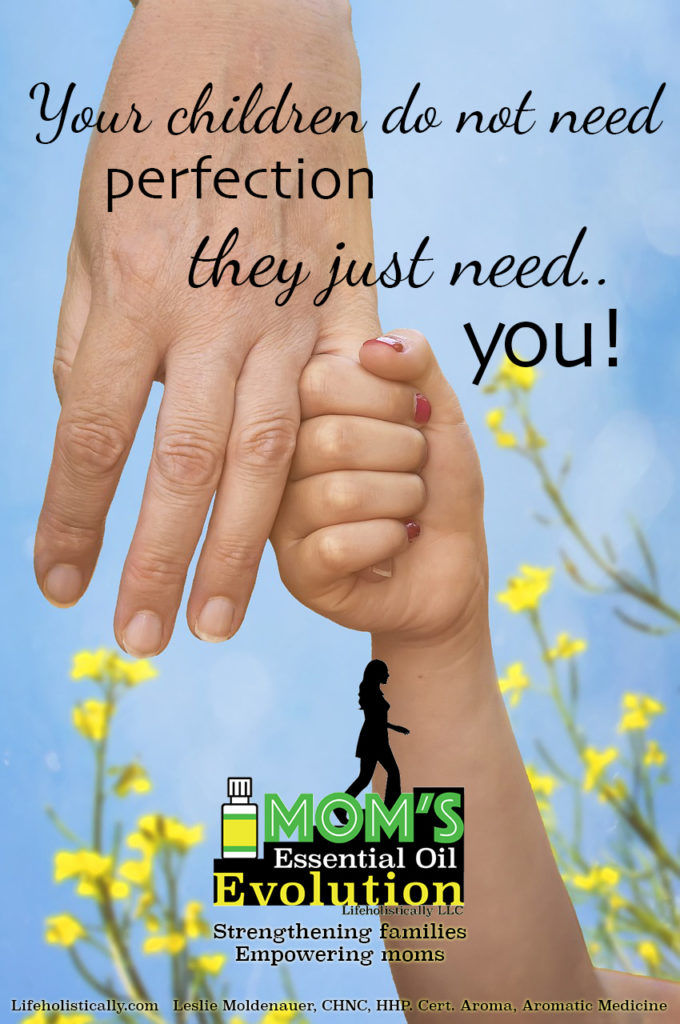
At the end of the day, you are your worst critic…..but I am here to cheer you on!
I decided to ask parents some questions on Survey Monkey about what type of information they were looking for. The response was outstanding! Over 300 parents chimed in about what they want to know….and for those of you that answered that survey and for those of you reading this today, I am going to be focusing on providing those very answers!
This is an exciting time; my focus is shifting, just a little. I will always, always, always make safety number one in all of my recommendations, but mom’s….you are getting all of my attention. Parenting is hard, and I can make it easier! So, with that in mind, welcome to “Mom’s Essential Oil Evolution”, strengthening families and empowering mom’s.
Let’s get started!
Want to know more about me and my mission? Click here!
BEFORE YOU GO! Remember to sign up for my FREE Facebook group! Hang out with me and THOUSANDS of other Essential Oil lovers looking to learn, click on to join Real Essential Oil Education Group!
Check out my FREE offer below!

Like so many practices in life, I encourage you to become educated on the proper use of essential oils. When using them, please do so cautiously, understanding that there is often misinformation on the internet. You can be assured that I support only educated and proven resources. While essential oils should not be feared they should be respected and used properly to ensure the safety of the individuals using them.
Please note that I am not a medical practitioner. The content of this website is provided for general informational purposes only and is not intended as, nor should it be considered a substitute for, professional medical advice. Do not use the information on this website for diagnosing or treating any medical or health condition. If you have or suspect you have a medical problem, promptly contact your professional healthcare provider. By using this website, you assume full responsibility and liability for your own actions.
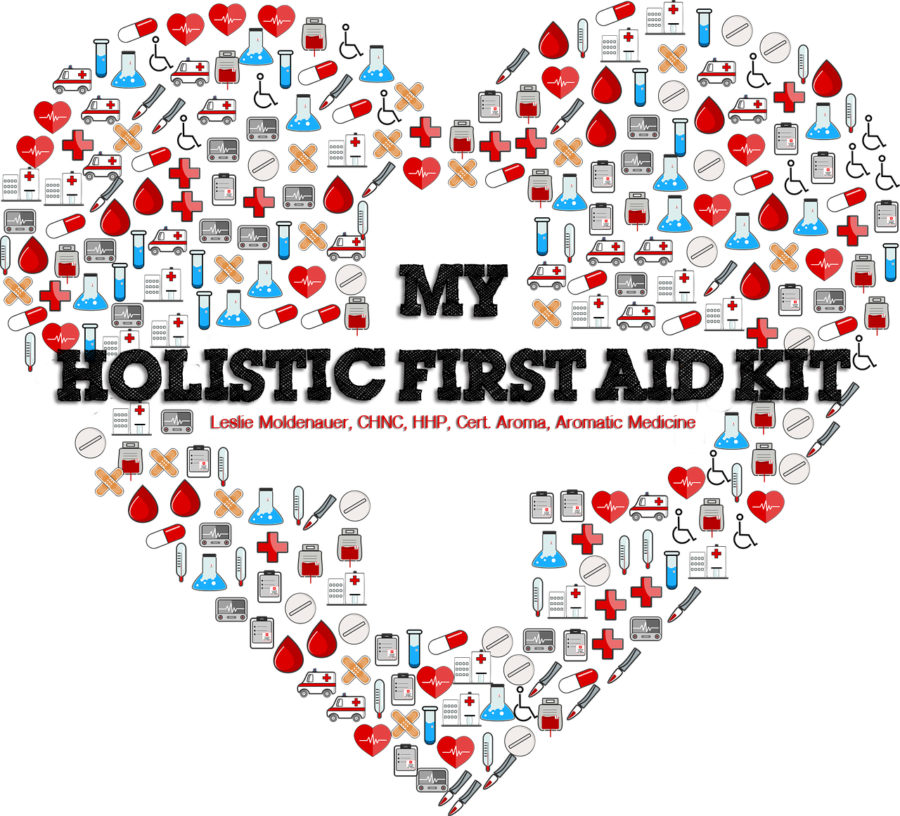
by Leslie Moldenauer | | Essential Oils, Herbs, Homeopathics
The variety of choices for a holistic first aid kit is quite exciting for the DIY’er in you and goes well beyond essential oils. Just about anything can be handled well with holistic remedies, and there are a plethora of options. I will be going over at a few of those options today. If we have the choice of handling things at home and to not have to travel to a doctor’s office where there is oftentimes a myriad of germs, let’s give it a go, right? I think it is important to understand when getting medical care is needed, but it is not always needed.
Homeopathic Medicine
What is homeopathic medicine? The word homeopathy, which comes from the Greek language, through Latin, and into English, means “like disease”. The guiding principle of homeopathy is stated as “let likes cure likes” (1). The foundation of homeopathy states that if a substance can cause disease in healthy people it will cure those same similar symptoms in sick people. It can be compared to a vaccine, without all the additives that are very much a health concern. Homeopathic medicine comes in varying strengths, but they are all considered the “minimum dose”.
“Homeopathic medicines are prepared through a series of dilutions, at each step of which there is a vigorous agitation of the solution called succus on until there is no detectable chemical substance left. As paradoxical as it may seem, the higher the dilution, when prepared in this dynamized way, the more potent the homeopathic remedy. Thereby is achieved the minimum dose which, none the less, has the maximum therapeutic effect with the fewest side effects” (2).
It is important to note that there are literally hundreds of varieties of single doses and mixed doses of homeopathy. If one type is not working for you, it does not necessarily mean that homeopathy does not work, but that you do not have the proper remedy. And much like essential oil, homeopathy is not a simple fix for any ailment; it is meant to be complementary care.
I have a homeopathic kit with me at all times of varying sizes. I have one kit in my home, one in my car and a few vials in my purse. The top remedy used in those kits is Arnica Arnica Montana. I use 30c, as it is perfect for my kids. Arnica is most often used for bruises, sprains, and inflammation. My boys are rough and tumble and both avid soccer players, so I combat large bruises by using this remedy at the time the bump happens, and a good 24 hours after.
The second vial I always carry with me is Nux vomica, also at 30c. “Strychnos nux-vomica is tree native to India and is a medium-sized tree with a short thick trunk. It is a major source of the highly poisonous, intensely bitter alkaloids strychnine and brucine, derived from the seeds inside the tree’s round, green to orange fruit” (3). When this is diluted down 10 to the 60th power, as in the case with a 30c dose, it is perfectly safe for use. But what is it used for? Nux vomica is used for overindulgence of food and drink. Have you eaten too much and are suffering from indigestion? Nux vomica is a great remedy to try.
Want to learn more about homeopathic remedies? Check out the information listed in the resources below.
*Want to know what dilution to go with? Follow this link for more information.
Herbs
I utilize my large storage space of herbs in a variety of ways in the home. I make many infused oils that sit in mason jars soaking up the summer sun like Arnica Arnica Montana, Rose Hips Rosa canina, and Calendula Calendula officinalis. During the months that the sun is a bit farther out of reach, I utilize my crock-pot on the keep warm setting. I like soaking dried calendula flowers in an apricot carrier oil, sealing in a mason jar and placing in the sun a few hours daily (With calendula and any other herbal material, make sure it is fully dry to avoid spoilage). The jar should stay in the sun for an average of 4 weeks, shake often and continually make sure that there is no moisture present. Strain well, using cheesecloth and pour into sterilized bottles. Calendula infused oil is great for inflammation and pain, as well as scrapes, scratches, burns and bites. I use this oil as a base for many of my other products as well. Calendula can be incorporated into baths, creams, compresses, washes, salves, ointments, massage oils, baths, facial steams, tinctures, and teas. It is also gentle enough to use for babies, children, or animals (4).
Infused oils are not the only way I use my herbs. Tinctures are useful winter remedies that can be used in a variety of ways. We use an Echinacea Echinacea purpurea tincture frequently throughout the winter months. I make this at home in the beginning of August by placing my raw herbal material into a small jar and covering with vodka. I shake the container every day for 3-4 weeks, strain it well and pour into a new sterilized jar. Echinacea is my first go to for the entire family at the first sign of sniffles or coughs, and is my number one weapon when my boys begin school in September. One dropper full in their fresh squeezed orange juice is a great immune booster. I typically use it for 2 weeks on and 2 weeks off throughout the winter/early spring. If someone is sick, however, I use it every day until symptoms subside. Other herbs that can be used in this way for school-aged children is Astralagus Astragalus propinquus and Goldenseal Hydrastis canadensis.
*It is important to note that Echinacea is not recommended for those with auto-immune disorders or are on medication to suppress the immune system, such as chemotherapy for example. The purpose of Echinacea is to boost white blood cells. Click here for a mention on the subject of echinacea and Lupus from the Johns Hopkins Center.
Herbs are also used as teas and decoctions (strong teas) in the home. I have a nice trio that I call my fever blend for both my kids and myself. I only reach for a true fever reducer such as Ibuprofen when my boys are completely miserable. The following trio is all diaphoretic herbs, either stimulating or relaxing, and the goal of them is to relax you as fevers make you uncomfortable and to help you sweat, but not urinate excessively causing possible risk of dehydration.
Mix equal parts:
Catnip Nepeta cataria
Chamomile Matricaria chamomilla
Lemon Balm Melissa officinalis
Use as needed (1tsp per cup of tea). Make a weak tea for children.
Follow this link to learn more about diaphoretic herbs and why they are useful for managing a fever (Bulk Herb Store).
This next remedy would definitely not be a first aid kit item for on the go, but if dehydration is a worry through a fever or flu where you or a loved one is vomiting or has diarrhea, this is a wonderful homemade concoction that everyone will love. (I do not recommend Pedialyte types of drinks). I make some the following concoction if the flu rears its ugly head in our house. It is approved by both my 9 and 11-year-old boys.
1 quart filtered water
Juice of 2-3 lemons (can add limes too if you so choose)
1/4 – 1/2 tsp. sea salt (not table salt)
1/3 cup raw honey
Not for children under 1 year of age
I typically take a small portion of that quart of water and heat it up. Add the honey and salt to that so it mixes the honey and dissolves the salt easily. Then add it to the remaining water. This tastes good and has exactly the balance you need to restore electrolytes and prevent dehydration.
* You can use pure coconut water. It works great, although it can be an acquired taste for some.
Elderberry Syrup for the Home
I am not a proponent of flu shots, so I do what I can to shorten the length of it if it happens to make its way into the home. Elderberry syrup can be purchased at your local Walgreens or CVS, but I prefer to make my own. It is easy to do, give it a try! Here is what you will need:
2 cups Elderberries Sambucus nigra dried (I prefer organic)
5 organic cloves
2 organic cinnamon sticks
1 tbsp organic raw ginger
1-2 tbsp organic dried echinacea (optional)
4 cups Purified or distilled water
Raw honey (add as much volume of honey as your liquid volume of elderberry syrup after simmering)
*Not for children under 1 year of age.
*Vegans can utilize agave syrup as a replacement for honey.
Directions:
Combine all ingredients except the honey and bring to just under a boil (do not boil). Reduce to a low simmer for about 30 minutes, mixing every 10 minutes or so. Remove from heat. Strain through a cheesecloth (I typically strain twice to make sure I get out all my herbal material). Be sure to squeeze out the juice from the berries. Measure your liquid and add an equal amount of honey. Place your pot back on a low simmer to fully soften honey and mix well. Let cool a bit then add to your glass bottles (sterilize bottles). Store in the fridge and use up within a month’s time as this has no true preservation system.
Want proof that elderberry syrup is effective? Here are a few research papers for your review:
*Kong F. Pilot clinical study on a proprietary elderberry extract: efficacy in addressing influenza symptoms. Online Journal of Pharmacology and Pharmacokinetics. 2009;5:32-43.
*Roschek B, Fink RC, McMichael MD, et al. Elderberry flavonoids bind to and prevent H1N1 infection in vitro. Phytochemistry. 2009;70:1255-61.
*Ulbricht C, Basch E, Cheung L, et al. An evidence-based systematic review of elderberry and elderflower(Sambucus nigra) by the Natural Standard Research Collaboration. J Diet Suppl. 2014;11(1):80-120.
*Zakay-Rones Z, Thom E, Wollan T, Wadstein J. Randomized study of the efficacy and safety of oral elderberry extract in the treatment of influenza A and B virus infections. J Int Med Res. 2004;32:132-40.
I utilize this syrup in any instance where the immune system needs a boost, not just for flu. It is a very effective cough remedy, too!
There are many other ways to utilize herbs in the home as a means to comfort, boost the immune system, and help encourage a speedy recovery from a variety of ailments. Check the resources below for some great reading material.
Essential Oils
I am a stickler for essential oil safety, so I will not be recommending applying essential oils to scrapes/cuts, or to use them undiluted. If your child has a scrape, a great option would be raw honey (manuka) or calendula crème from Weleda. You can purchase this European based crème at Target. Calendula will create a covering over the wound and is very effective in preventing infection and encouraging healing (5).
I keep a bottle of Lavender Lavandula angustifolia with me at all times, typically diluted to 3%. Lavender supports mental wellness, so it can be used in a variety of ways from just a simple case of grumpy gus, an overly stressful moment, or something unexpected like an accident, to bumps and bruises, burns, bug bites, and more. I usually do not use a roller bottle in this instance, as it is likely not going to be used by only one person, therefore contamination is a concern. Apply where needed. If you are utilizing it for mental wellness, inhalation is best.
At home, if there is a minor injury that has a bigger potential for bruising, I have a mixture of Helichrysum Helichrysum italicum and Kunzea Kunzea ambigua that I apply immediately to the area (Both are safe for kids). These two oils can work together to minimize bruising, reduce pain and discomfort and encourage speedy healing.
If I am at home and there is a bellyache present, I tend to use a weak tea of chamomile and peppermint to soothe and comfort. If I am away from home, I have an inhaler ready to go with essential oils such as Cardamom Elettaria cardamomum, Ginger Zingiber officinalis, and Spearmint Mentha spicata. You can rub into the belly appropriately diluted, but I find inhalation to be more effective here.
Closing
I hope that these basic ideas are helpful for you to begin to make your own first aid kit, one for home and one for when your away. There are many other things that can be utilized, what would you include in yours?
References
(1) (2) What is homeopathic medicine? Retrieved from http://homeopathyusa.org/homeopathic-medicine.html
(3) Strychnos nux-vomica. Retrieved from https://en.wikipedia.org/wiki/Strychnos_nux-vomica
(4) Healing with Calendula, (2010) Retrieved from
http://mountainroseblog.com/healing-calendula/
(5) Calendula, a wound healing herb Retrieved from
Calendula: A Wound Healing Herb
Herbal Resources
Adaptogens: Herbs for Strength, Stamina, and Stress Relief by D. Winston
Botanical Safety Handbook, 2nd ed. By AHPA (American Herbal Products Association)
Healing Wise (Wise Woman Herbal) by. S. Weed
Herbal Antibiotics, 2nd Edition: Natural Alternatives for Treating Drug-resistant Bacteria by S. Buhner
Herbal Antivirals by M. Jones
Herbal Medicines: A Guide for Health-Care Professionals by C. Newall, L. Anderson, and D. Phillipson
Herbs for Common Ailments: How to Make and Use Herbal Remedies for Home Health Care by R. Gladstar
Herbal Teas: 101 Nourishing Blends for Daily Health & Vitality by K. Brown
Medical Herbalism: The Science Principles and Practices Of Herbal Medicine by D. Hoffmann
Principles and Practice of Phytotherapy: Modern Herbal Medicine, 2e by K. Bone and S. Mills
Rosemary Gladstar’s Family Herbal: A Guide to Living Life with Energy, Health, and Vitality
Rosemary Gladstar’s Herbal Recipes for Vibrant Health
Rosemary Gladstar’s Medicinal Herbs: A Beginner’s Guide
Homeopathic Resources
Classical Homeopathy by M. Carlston
Complete Homeopathy Handbook by M. Castro
Encyclopedia of Homeopathy by A. Lockie
Homeopathy Pocket Guide by A. Brandl
Principles and Practice of Homeopathy by D. Owen
Like so many practices in life, I encourage you to become educated on the proper use of essential oils. When using them, please do so cautiously, understanding that there is often misinformation on the internet. You can be assured that I support only educated and proven resources. While essential oils should not be feared they should be respected and used properly to ensure the safety of the individuals using them.
Please note that I am not a medical practitioner. The content of this website is provided for general informational purposes only and is not intended as, nor should it be considered a substitute for, professional medical advice. Do not use the information on this website for diagnosing or treating any medical or health condition. If you have or suspect you have a medical problem, promptly contact your professional healthcare provider. By using this website, you assume full responsibility and liability for your own actions.
My Holistic First Aid Kit II
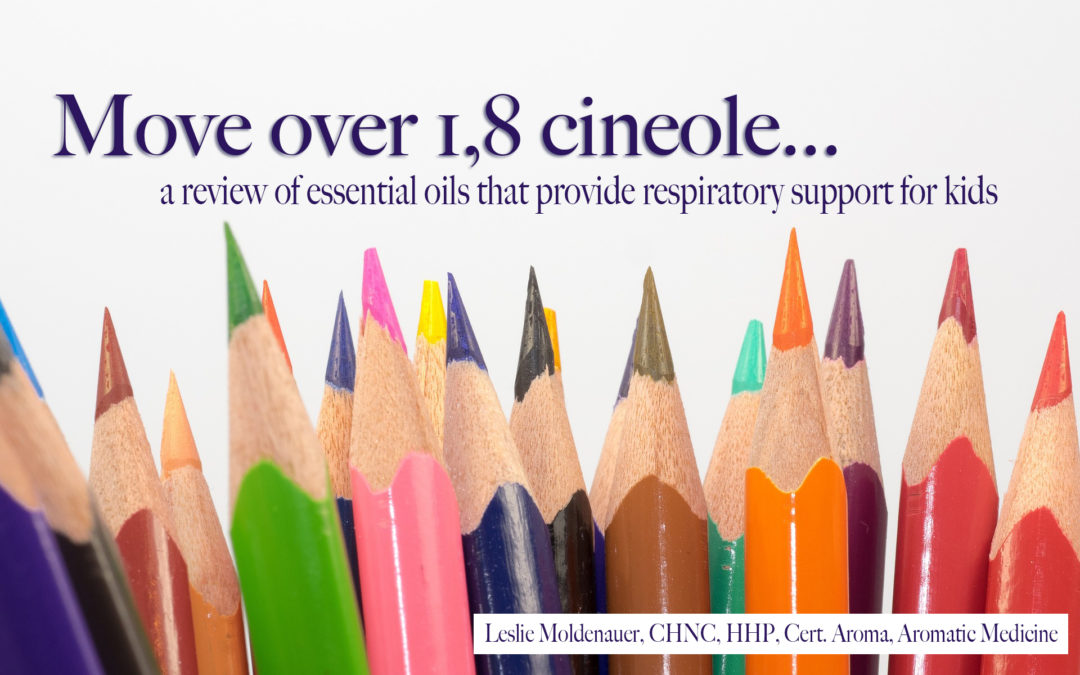
by Leslie Moldenauer | | Essential Oils
Aromatherapists have written articles about the safety of the constituent 1,8 cineole, specifically Eucalyptus radiata, Eucalyptus globulus, and Eucalyptus smithii. You’ll read plenty of articles as to why this constituent is not safe for children and not to use it at all under the age of 10. This is not, however, an accurate statement. The caution that is given from Robert Tisserand in his book entitled Essential Oil Safety 2e concerning Eucalyptus essential oil, and any other oil considered high in 1,8 cineole is to not apply on or near the face of a child under 10, (1) which is very different than do not use. No 1,8 cineole? Other respiratory essential oils for kids.
Rather than reinvent the wheel in this article and tell you why you should not be using Eucalyptus on a child, (which I believe that you absolutely can do), this article is going to speak to which essential oils are a great replacement for oils high in 1,8 cineole when your child needs respiratory system support, so you can feel confident and empowered and use these powerful tools for good.
*For more information on Eucalyptus, see the well-written article referenced below by Jade Shutes of The School for Aromatic Studies.
Now, let’s take a look at which essential oils we can use to help support the respiratory system of our children while taking the concern of 1,8 cineole out of the picture.
The first essential oil I would like to cover is Cedarwood, specifically Cedarwood Atlas:
Cedarwood Atlas: Cedrus Atlantica
Aroma: Balsamic, woody, sweet and spicy
Chemistry: Cedarwood Atlas contains approximately 50% β-himachalene, which is a sesquiterpene, and has 15 carbon atoms. Typically, sesquiterpenes have anti-inflammatory properties and can help combat germs in the home when they arrive. Follow this link to learn more about the chemistry of Cedarwood.
Cedarwood Atlas is a great oil to support respiratory wellness and is safe for kids. Cedarwood can help to reduce spasms, address spastic coughs, and is an expectorant helping to combat phlegm. It is a great aroma for fall and winter, so in a diffuser, it has a dual purpose.
Here is a great blend for your diffuser when needed:
Cedarwood Cedrus atlantica 3 drops
Cypress Cupressus sempervirens 2 drops
Sweet Orange Citrus sinensis 5 drops
*This amount is suitable for a 400ml water reservoir diffuser. Adjust accordingly.
(See more on safe diffusing below)
Fir needle or Siberian fir (one and the same) is my next recommendation. I was using this essential oil when my oldest (now 13) was responsible enough to perform a steam bowl (with supervision).
Fir Needle/Siberian: Abies sibirica
Aroma: Balsamic, camphorous, fresh, green, herbaceous, piney and soft
Chemistry: Siberian fir, mainly monoterpenes, has 10 carbon atoms and is a great stimulating decongestant and expectorant. Follow this link to learn more about the chemistry of Fir Needle.
The uplifting forest-fresh scent of Fir Needle supports a healthy respiratory system. Fir Needle helps ease congested breathing associated with typical seasonal illness. I feel this essential oil is a fantastic replacement for oils high in 1,8 cineole.
Steam Tent for Respiratory Support
Master blend
Fir Balsam 5 drops
Rosalina 5 drops
Spruce 5 drops
(See instructions and safety below for a steam tent)
Pine has a stronger aroma than Siberian Fir; it is crisper with more of a bite. I can close my eyes and imagine standing on the forest floor of pine needles when performing organoleptic testing on this gem of an oil.
Pine: Pinus Sylvestris
Aroma: Fresh, green, resinous, strong and warm.
Chemistry: Pine is a monoterpene, and it is common knowledge that monoterpenes carry a risk of oxidizing quicker than other essential oils. Proper storage is important.
Pine is known for its ability to help support a healthy respiratory tract, and in a diffuser helps to clear/cleanse the air. It is also a powerful addition to cleaning products to help purify the home. You can add Pine to Lemon essential oil in a spray bottle if Pine-sol is a scent that you love. Make sure if only using essential oils and water than you use it quickly without a preservative.
Rosalina: Melaleuca ericifolia
Aroma: Herbaceous, medicinal, robust, warm and slightly spicy.
Chemistry: Rosalina has a very unique chemistry, containing primarily monoterpenols (linalool), but also contains a small enough amount of 1,8 cineole to be perfectly safe yet effective for kids. Its properties are similar to both Tea Tree and Niaouli/Eucalyptus, and is very gentle for inhalation as well as topical application for children (2).
Open the Flood Gates (Inhaler 5 and up)
Rosalina 6 drops
Orange Sweet 6 drops
Spruce 3 drops
Place drops on the inhalers cotton wick and snap into place. Use as needed. (See safety recommendations below)
Now, let’s briefly talk about safety regarding my recommendations above…
Aromatherapy Inhalers
On average, the age recommended for aromatherapy inhalers is five and up (In line with Plant Therapy’s recommendation). There are two reasons that I agree with this recommendation. We need to assess the maturity of the child. They need to understand what they are using and why. As a parent, it is important for you to assess your child and decide if they are ready at five to handle it. If you are not sure, I recommend waiting a bit longer.
The second reason for the recommendation is that inhalers are a direct method of inhalation, whereas diffusers are considered to be a more passive method of diffusion. Less is more.
Lastly, if you are sending your kid to school with an inhaler with permission, be sure that they understand they are never to be shared with their classmates.
Diffusing (Three months and up)
Practicing safe diffusion is important for kids. If essential oils need to be used under the age of two, diffusion is my preferred method of use. Robert Tisserand recommends 30-60 minutes of diffusion at a time. For under two, 10 minutes of diffusion is likely plenty of time for them to obtain the oils therapeutic benefits. Older children two and up can likely tolerate 10-20 minutes of diffusion. In both instances, be sure to take a reasonable break of about 45 minutes to 1 hour before turning the diffuser on again. There are many diffusers with handy timers so you can set it and have peace of mind that you are not diffusing for too long.
What are the risks of over diffusing? Habituation is a concern. When you have diffused for too long a time period, you may no longer notice the aroma, but it can begin to put stress on the body rather than be beneficial. I compare this to walking into a room with someone wearing a specific perfume (assuming you do not have a negative reaction to it). You may no longer notice it after being in the room for a bit. There is also a risk of overexposure that can result in headaches, nausea, dizziness, and an overall feeling of being unwell. As parents, it is therefore important to keep diffusing times down as in many cases little kids are not going to be able to vocalize that they are feeling unwell.
*For further information on diffusing safety, see the book Essential Oil Safety 2e by Robert Tisserand and Rodney Young referenced below.
Steam Tent (Not for all ages)
Heat water on the stovetop to just before boil (be sure not to make it too hot). Pour into a stainless steel or glass bowl, place 1-2 drops of essential oil blend in the bowl and lean over the bowl, covering their head with a towel. Inhale the steam, alternating through nose and mouth as long as the steam is present (3-5 minutes). Make sure they keep their eyes closed. You can repeat every few hours as needed. Older children can lean over a plugged sink rather than a bowl if desired as it then lessens the change of spillage.
*Test the heat of the steam before you let your child try it. Always supervise as you are using extremely warm water and essential oils. Recommended for kids five and up (dependent on the maturity of the child), for the same reasons as an aromatherapy inhaler. Parents, if you feel your child is not responsible enough, please wait another year or two. Use your discretion.
For more Aromatherapy recommendation like this, I encourage you to take a look at my most recent book entitled, Aromatherapy for Kids, Safe and Sound. I briefly cover my tops 25 essential oil recommendations and includes plenty of recipes/blends for use, and as always, speaks on safety.
References:
(1) Tisserand, R. Young, R. (2014) Essential Oil Safety (2nd Ed) Churchill Livingstone/Elsevier
(2) Rhind, J. (2012) A handbook for aromatherapy practice. (p. 194)
Is Eucalyptus Safe for Children. by Jade Shutes of The School for Aromatic Studies
Like so many practices in life, I encourage you to become educated on the proper use of essential oils. When using them, please do so cautiously, understanding that there is often misinformation on the internet. You can be assured that I support only educated and proven resources. While essential oils should not be feared they should be respected and used properly to ensure the safety of the individuals using them.
Please note that I am not a medical practitioner. The content of this website is provided for general informational purposes only and is not intended as, nor should it be considered a substitute for, professional medical advice. Do not use the information on this website for diagnosing or treating any medical or health condition. If you have or suspect you have a medical problem, promptly contact your professional healthcare provider. By using this website, you assume full responsibility and liability for your own actions.
Back to School Essential Oils and More!
Essential Oil Safety-Cautions and Contraindications











